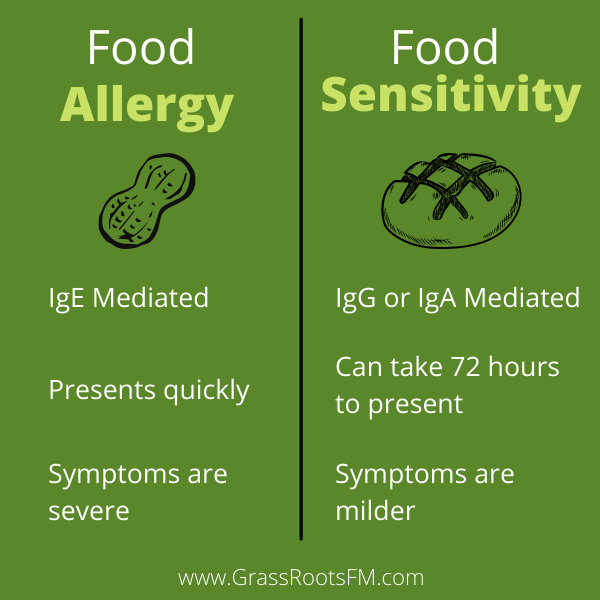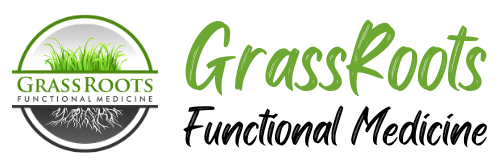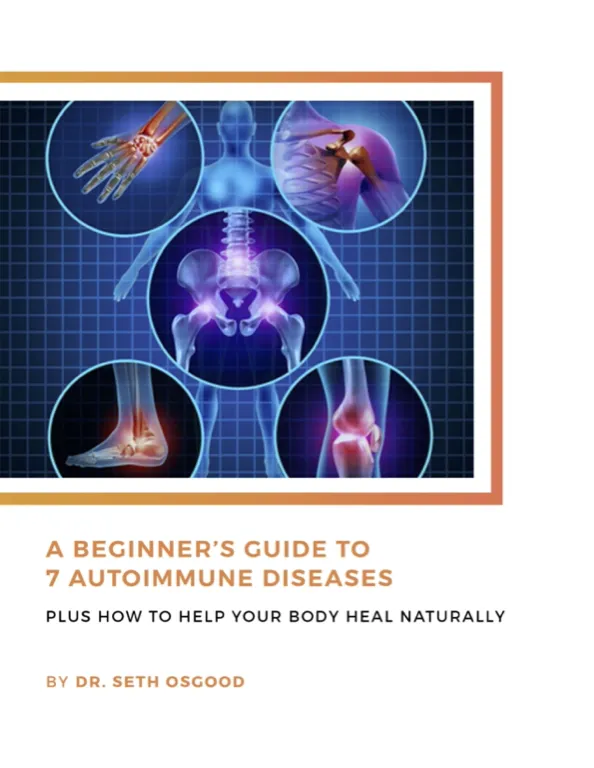In functional medicine, you often hear that food is the best medicine, but that depends entirely on the food and your body!
There are certain foods that we know can make us sick, such as sugar, fast food, and processed foods. However, “healthy” foods like whole wheat bread and tomatoes can also make you sick if your body doesn’t tolerate them. What’s more, they can increase your risk for chronic disease if you don’t address them.
In this article, we’ll look at what a food sensitivity is, top signs to look for, the long-term impact on your health, and how to get the right testing.
What is a Food Sensitivity?
A food sensitivity is a delayed immune response (typically IgA or IgG-mediated) to a food. Unlike a food allergy, which is IgE-mediated and presents immediately, food sensitivities may appear up to 72 hours after exposure and cause mild and seemingly vague symptoms.
If you have a sensitivity to gluten, for example, you may eat a bagel for breakfast on Monday and experience joint pain on Tuesday afternoon.

Signs You May Have a Food Sensitivity
Food sensitivities can cause or worsen a wide array of symptoms, including:
- Brain fog
- Fatigue
- Headaches
- Anxiety or depression
- Insomnia
- Joint pain
- Acne
- Eczema
- Dry, itchy skin
- Bloating, gas, abdominal pain
- Constipation
- Reflux or heartburn
- Congestion or runny nose
- Sinus infections
- Chronic ear infections (in children)
- ADD and ADHD
The Long-Term Risk of Food Sensitivities
While the symptoms of a food sensitivity may be uncomfortable in the moment, the actual immune response poses a larger risk in the long term.
Chronic Inflammation
Each time you consume a food your body does not tolerate your inflammation levels rise. If it’s a food you eat regularly (such as gluten or soy which are included in almost all packaged foods) the inflammation never ceases and becomes chronic. Chronic inflammation is the leading cause of modern disease, including autoimmune disease, heart disease, cancer, and more.
Leaky Gut
One area that takes a particular hit from inflammation is the lining of your GI tract. Over time, this inflammation can cause the tight junctions of your intestinal lining to open up, creating holes for bacteria, viruses, and food particles to escape into the bloodstream.
Interestingly this can lead to patients developing more food sensitivities as more and more food particles wind up in the bloodstream and trigger an immune response. When a patient has dozens of sensitivities it is a big red flag that leaky gut or another underlying imbalance is at the root of the issue.
Fortunately, when you repair your gut, sensitivities often decrease and you can expand your diet to add in more diversity.
How to Find Out If You Have a Food Sensitivity
If you’ve noticed any of the symptoms I listed above and believe they may be caused by a food sensitivity, you have two options to pinpoint your trigger foods.
1. Elimination Diet
This is the gold standard and my first recommendation to all of my patients because it lets you see exactly how your body responds to specific foods.
In our Adaptation Program, we advise patients to eliminate the most common trigger foods for a period of 30 days:
- Gluten
- Dairy
- Soy
- Nightshades – tomatoes, potatoes, peppers, eggplant
- Eggs
- Grains – with or without gluten
- Legumes
This provides enough time for the foods to exit your system and inflammation levels to calm down to baseline.
Then, we recommend reintroducing each food one at a time to gauge your reaction. Eat each test food three times on day one and wait two days to see if you observe any symptoms. If you have a negative reaction, stop that food immediately, put it on your “avoid” list, and wait for your symptoms to resolve before introducing the next food. If you go all three days without any negative reactions you can add that food to your “yes” list.
2. At-Home Food Sensitivity Test
For a more comprehensive look, many of our patients find food sensitivity testing enlightening and helpful. It measures immune reactivity to a much larger group of foods than an elimination diet and is a great option for children and those who want as much information as possible to feel better quickly.
The test we use in the clinic (and offer online) is the Great Plains Laboratory Food Map test. I have found it to be the most accurate and comprehensive because it looks at 190 different foods and gauges your reactivity on a 4-point scale.
Here’s a look at how the test works and what it tells you:
At-Home Food Sensitivity Test with a Private Nutrition Consult
If you’re ready to get your food sensitivities under control and eat with confidence, we now offer at-home food sensitivity testing with a 60-minute nutrition consult!
You’ll gain clarity on what foods to avoid, red flags to investigate, and how to decrease inflammation and lower your risk for chronic disease.
About the Author: Dr. Seth Osgood is a Doctor of Nursing Practice, Board Certified Family Nurse Practitioner and Institute of Functional Medicine (IFM) Certified Practitioner. Dr. Osgood received his post-graduate training in Functional Medicine through the IFM and from working with Dr. Amy Myers. He has helped people from around the world improve their health utilizing a Functional Medicine approach.





